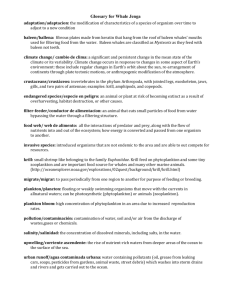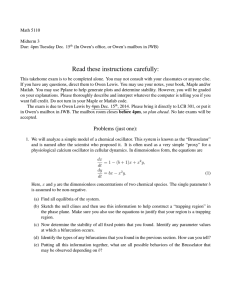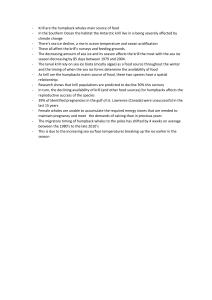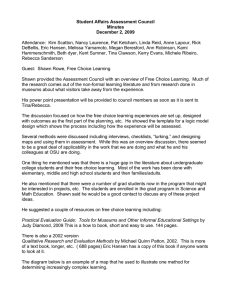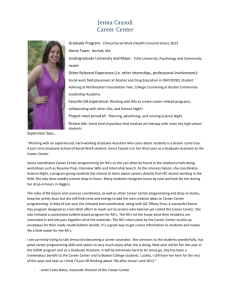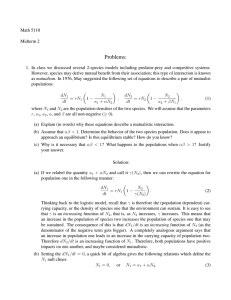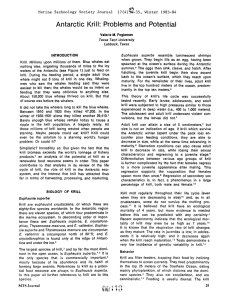Read these instructions carefully:
advertisement
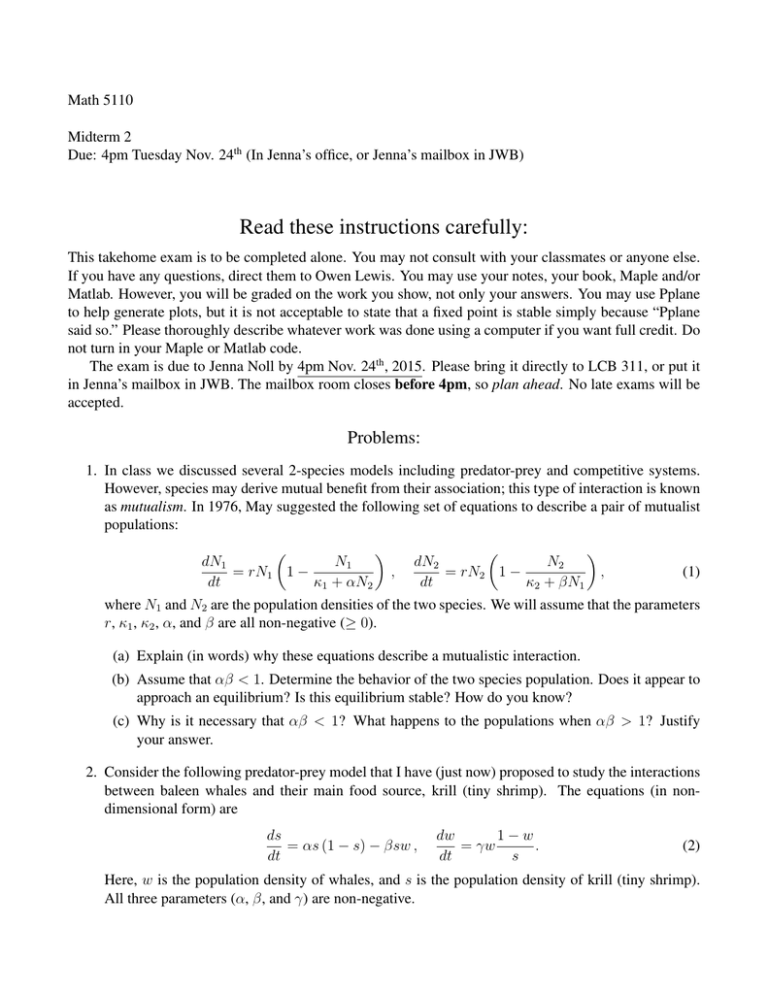
Math 5110 Midterm 2 Due: 4pm Tuesday Nov. 24th (In Jenna’s office, or Jenna’s mailbox in JWB) Read these instructions carefully: This takehome exam is to be completed alone. You may not consult with your classmates or anyone else. If you have any questions, direct them to Owen Lewis. You may use your notes, your book, Maple and/or Matlab. However, you will be graded on the work you show, not only your answers. You may use Pplane to help generate plots, but it is not acceptable to state that a fixed point is stable simply because “Pplane said so.” Please thoroughly describe whatever work was done using a computer if you want full credit. Do not turn in your Maple or Matlab code. The exam is due to Jenna Noll by 4pm Nov. 24th , 2015. Please bring it directly to LCB 311, or put it in Jenna’s mailbox in JWB. The mailbox room closes before 4pm, so plan ahead. No late exams will be accepted. Problems: 1. In class we discussed several 2-species models including predator-prey and competitive systems. However, species may derive mutual benefit from their association; this type of interaction is known as mutualism. In 1976, May suggested the following set of equations to describe a pair of mutualist populations: N1 dN1 = rN1 1 − , dt κ1 + αN2 dN2 N2 = rN2 1 − , dt κ2 + βN1 (1) where N1 and N2 are the population densities of the two species. We will assume that the parameters r, κ1 , κ2 , α, and β are all non-negative (≥ 0). (a) Explain (in words) why these equations describe a mutualistic interaction. (b) Assume that αβ < 1. Determine the behavior of the two species population. Does it appear to approach an equilibrium? Is this equilibrium stable? How do you know? (c) Why is it necessary that αβ < 1? What happens to the populations when αβ > 1? Justify your answer. 2. Consider the following predator-prey model that I have (just now) proposed to study the interactions between baleen whales and their main food source, krill (tiny shrimp). The equations (in nondimensional form) are ds = αs (1 − s) − βsw , dt dw 1−w = γw . dt s (2) Here, w is the population density of whales, and s is the population density of krill (tiny shrimp). All three parameters (α, β, and γ) are non-negative. (a) To avoid complications, assume that s 6= 0 for this part. Find both equilibria of the model. What conditions must the parameters meet in order to ensure the existence of an equilibrium where both species can coexist. Is the coexistence equilibrium stable? How do you know? (b) Generate a phase plane and some population trajectories illustrating the behavior from part (a). Now, what happens if the parameters fail to meet the condition you found in part (a)? What appears to be the fate of whales and krill in this case? Generate some more population trajectories and interpret your findings biologically. (c) We can rewrite the equation for the change in whale population density as dw = λ(s, w)w, dt where λ is the population dependent growth rate of whales. The model that I have proposed has assumed something very unreasonable (biologically) about λ(s, w), what is the unreasonable assumption?
